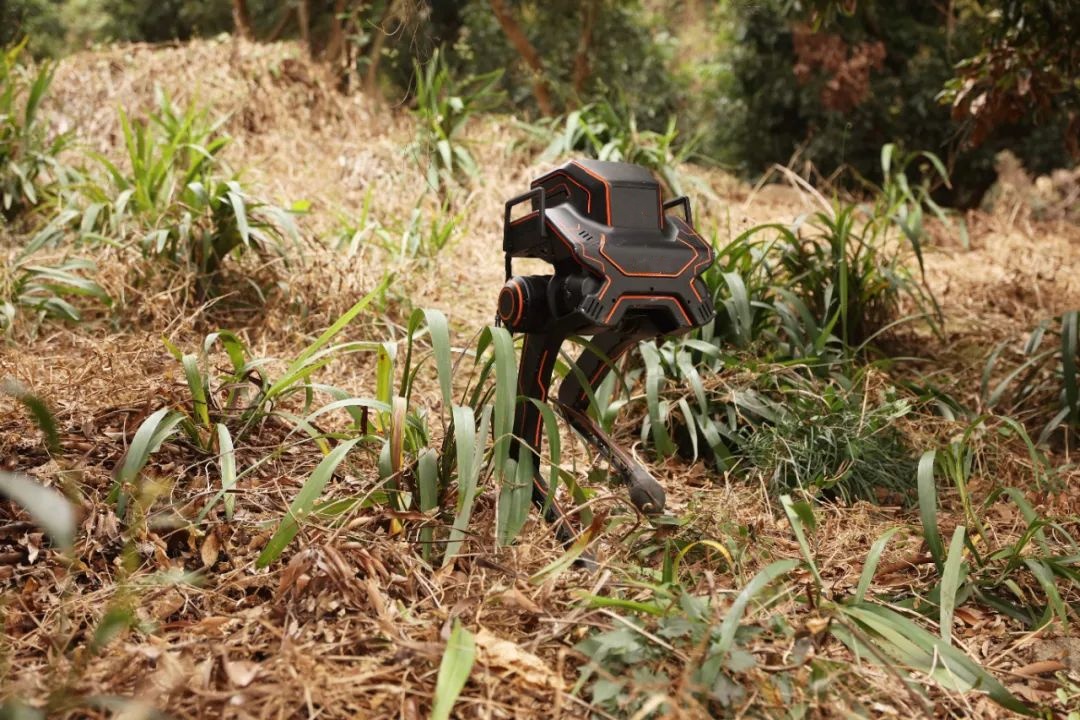Based on Reinforcement Learning, the Bipedal Robot P1 Walks in the Wild
Foxtech’s P1 bipedal robot, powered by advanced reinforcement learning, has achieved a major milestone by successfully navigating rugged terrains in Tanglangshan Park, Shenzhen. In a zero-sample, fully open testing environment with no prior data on forest conditions, P1 demonstrated remarkable adaptability, control, and stability. This achievement highlights Foxtech’s robust reinforcement learning framework, which integrates Real2Sim2Real closed-loop systems, modular neural network design, and iterative pre-training algorithms. Together, these innovations enable P1 to overcome complex, real-world obstacles autonomously. Foxtech’s success with P1 reflects its dedication to developing cutting-edge robotics capable of adapting to and thriving in dynamic environments.
Foxtech P1 Bipedal Robot Achieves New Heights in Reinforcement Learning with Wild Terrain Testing
Based on cutting-edge reinforcement learning, Foxtech’s bipedal robot, P1, recently completed its inaugural test in the rugged landscapes of Tanglangshan Park, Shenzhen. In a zero-sample, fully open, and unprotected environment, the P1 robot demonstrated its impressive mobility across diverse terrains, showcasing the control and stability honed through intensive reinforcement learning. With minimal intervention and no pre-fed data on forested terrain, P1's successful trek underscores Foxtech’s advanced reinforcement learning capabilities and innovative approach to autonomous robotics.
P1’s First Foray into Wild Terrain: Real-World Reinforcement Learning in Action
Foxtech has spent years developing and refining its proprietary reinforcement learning platform, which focuses on transforming pioneering research into scalable, systemized capabilities for product development. This research has culminated in a unique reinforcement learning framework based on three core elements:
Real2Sim2Real Closed-Loop System – A continuous, automated data cycle, from real-world data collection to simulation modeling and strategy deployment, significantly reduces human intervention. This process minimizes the simulation-reality gap, increasing training efficiency and outcome precision.
Neural Network Architecture Design – Foxtech’s neural network architecture leverages modular design, defining each module’s role and ensuring adaptability across diverse environments and hardware configurations. This structure allows for a robust, interference-resistant control strategy adaptable to various robots and scenarios.
Data Generation and Training Algorithms – Foxtech addresses the scarcity of effective training data through an Iterative Pre-Training (IPT) approach, breaking down core robot capabilities into stages. This method allows Foxtech to collect targeted, valuable data, resulting in high-performance policies for complex mobility tasks.
These three elements collectively power the P1 robot’s ability to walk, climb, and adapt to rugged terrain, proving that Foxtech’s reinforcement learning framework can tackle real-world environments with minimal preliminary data.

Mastering Diverse Terrains with Advanced Mobility
The recent testing showcased the P1 robot’s impressive mobility and adaptability, navigating obstacles such as narrow ditches, exposed rock layers, winding vines, and eroded, slippery ground. Unlike controlled environments, each slope, step, and surface P1 encountered was unique, posing new challenges for a robot unfamiliar with natural landscapes. Yet, despite having no prior data on forest trails or related conditions, P1 adapted seamlessly to these obstacles, maneuvering through them dynamically and efficiently.
This achievement emphasizes the reliability and applicability of Foxtech’s systemized reinforcement learning approach. Foxtech has demonstrated that P1 can perform beyond typical laboratory scenarios, underscoring its potential for more advanced capabilities in real-world applications.
Future Directions: Expanding Robotic Capabilities in Real-World Environments
Foxtech’s ongoing development focuses on key robotic competencies, including mobility (locomotion), manipulation, and the combined control of movement and manipulation (loco-manipulation). Building on its success with P1, Foxtech aims to push forward with more developments that will drive advances in humanoid and bipedal robotics. Each milestone, such as P1's successful performance in unstructured terrain, reinforces the effectiveness of Foxtech’s unique approach to reinforcement learning and its commitment to delivering practical, robust, and adaptive robotic solutions.
Foxtech’s reinforcement learning-driven innovations offer a glimpse into the future of robotics, where machines are not only resilient but also adaptive, capable of mastering unfamiliar terrains with minimal data inputs. As Foxtech continues to explore new applications, the P1 bipedal robot stands as a testament to the power of advanced, systematized reinforcement learning in shaping the next generation of autonomous robots.

- Reinforcement Learning Enables Bipedal Robot to Conquer Challenging Terrain
- Drones for 3D Indoor Exploration-Cultural Relics Protection and Indoor Survey
- Industry Application: Intelligent Unmanned Operation Solutions for Lakes – Rapid Deployment for Continuous Protection
- High-Altitude Cleaning Case Introduction - Drone Spraying and Cleaning
- New Performance: SLAM Handheld Lidar Scanner + External Panoramic Camera New Combination

